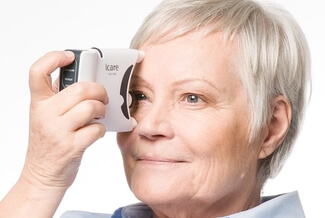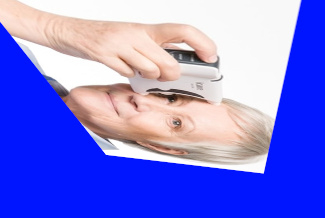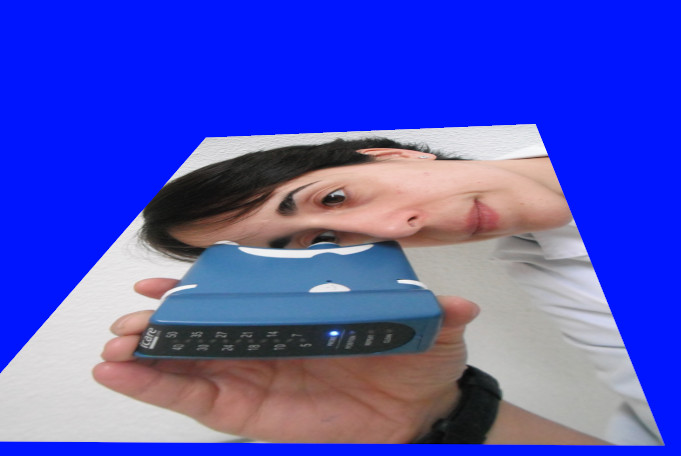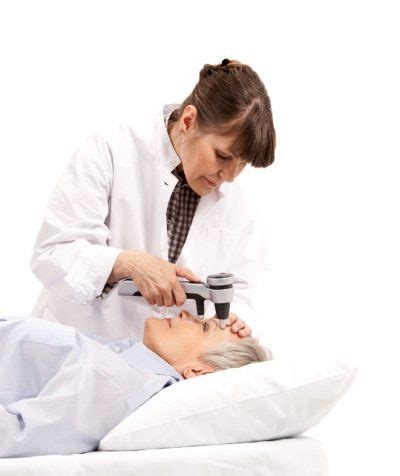Is there a way to use the iCare HOME tonometer to measure your IOP while lying down? I tried it but it didn’t seem to work (and I did magnetize the probe of course). I thought I saw something in the FitEyes forum where someone said they had “tricked” the device or figured out a way to measure their IOP lying down. Do you know if this is possible?
Yes, you can measure your intraocular pressure with an Icare HOME tonometer while lying down. While lying down, turn your head toward the side and measure like normal.
Stated another way: When lying down, instead of looking at the ceiling, you would look toward the side wall; the probe will travel horizontally, along the same path (relative to the Earth) as when you measure in the seated position.
Make sure the probe is horizontal when you are lying down. Vertical will not work. The Icare PRO models can take measurements vertically, but the Icare HOME cannot. However, this simple work-around solves that.
Here are some manipulated images to help make the technique clear. For reference, here is how you align the tonometer while seated:

To take a measurement with the Icare HOME while lying down, you position the tonometer against your face exactly the same way. The supports touch your face in the same spots as if you were seated. You are simply on your side.

Here's another rotated image to show the concept:

Imagine you are seated on your bed and holding the tonometer in the ready-to-measure position. From the seated position you simply fall over to your left or right side, yet the tonometer doesn't change position on your face. The tonometer probe will still travel perfectly horizontal. The measurement technique is the same as if you are seated. You could imagine the room was rotated 90 degrees, but the relationship between your body and the tonometer does not change. (In reality, do not fall over with the tonometer against your face. I described it this way to illustrate the point. In reality, you would already be lying down, and you simply turn your head to the side, then hold the tonometer up to your face. You can also roll over on your side.)
When checking my IOP while lying down, I do not sit up first. I remain lying down (such as in bed when I first wake up in the morning). While lying down, I reach over and pick up my Icare. I measure my IOP while still lying down, as described here. The only movements I make are:
- pick up my Icare. I keep it on the bed during the night. I do not have to get up to reach it.
- if sleeping on my back, turn my head to the side (or roll over onto my side). However, I normally sleep on my side, so I do not have to change position.
- check my IOP in the first eye
- I usually stay in the same position to check the other eye. However, you may find it easier to turn your head the other way (or roll onto your other side) to check the other eye.
- Do not sit up at any time when checking your first morning IOP.
Even the act of turning your head or rolling onto your side will very slightly change your IOP. But those changes are inconsequential. However, if you sit up, your IOP will immediately change by a significant amount.
You should expect higher IOP of 5 mmHg or a little more when lying down. Everyone has higher IOP while lying down, including people without glaucoma. Compare apples to apples. Do not compare your lying down IOP to your in-office seated IOP targets.
My IOP while seated is about 13. It is about 18 while lying down. In my case, it is not realistic to target an IOP of 13 while lying down. I would need an IOP of about 8 to have an IOP of 13 while lying down.
Regarding the image blow, do not measure IOP this way with an Icare HOME. The PRO models can measure like that, but the Icare HOME cannot.

Use of this site constitutes acceptance of our User Agreement and Privacy Policy.

The new Icare HOME 2, released in 2022, can take measurements while you are lying down without the need to turn your head to the side. You can lie down, look straight up and take a measurement with the HOME 2. The probe will not fall out.